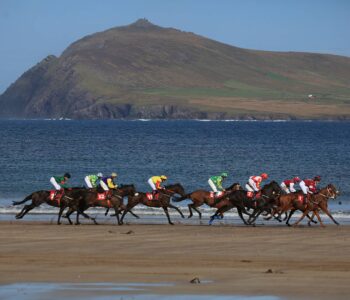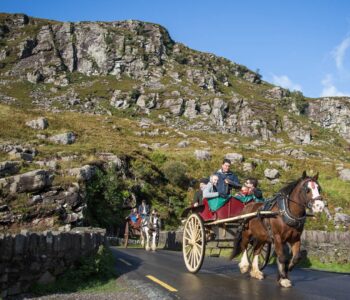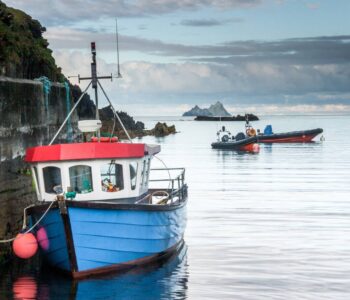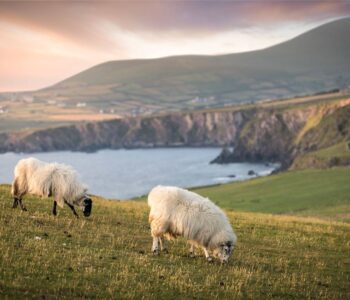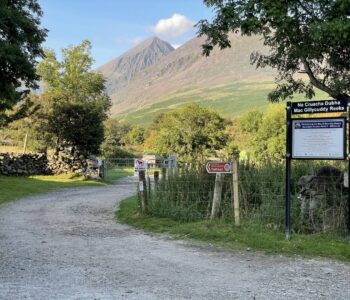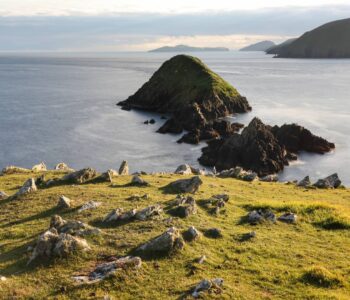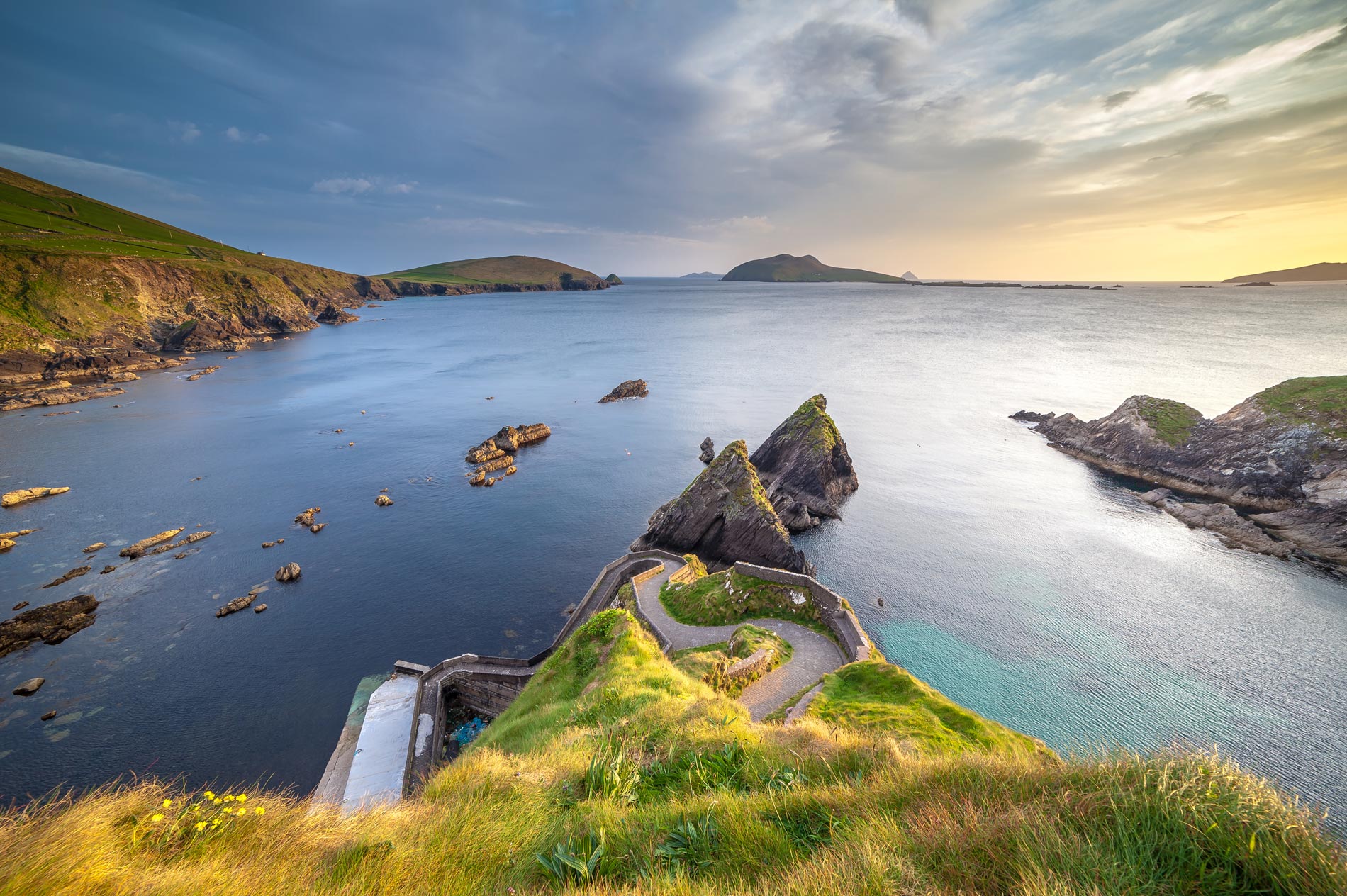
Geography No matter from which direction the county of Kerry is approached, the great central spine of mountains draws the eye of the traveller.
The relatively high mountains and narrow peninsulas conjure weather patterns which change the face of the mountains, the surface of the water and the texture of the landscape by the minute. The fretted coastline and deep bays created by the mighty Atlantic play tricks with the light and produce a magical quality which intoxicates the senses.
The south shore of the Shannon Estuary forms the northern boundary of beautiful North Kerry. The county, noted for fun and festivals, is one of Ireland’s fastest growing tourism centres. Kerry has extensive beaches and spectacular scenery. County Kerry is a rugged county and has Ireland’s highest mountain – Carrauntoohill 1,039m. The southern parts of the county – the Ring of Kerry – and the Dingle Peninsula are more mountainous. The northern part of the county is lower lying. The main features of County Kerry include the long bay of the Kenmare River, and Dingle Bay. This county covers just over 1800 sq. miles. Archaeology and History Both Cork and Kerry have a very strong archaeological and historical heritage and many surviving monuments can be visited.
The visitor should seek permission before entering private property. Some of these monuments are National Monuments and are in the care of the State. The first settlers in Ireland were the Mesolithic people who reached Ireland about 9,000 years ago. While the concentration of known sites is in the north east of Ireland, there is evidence of such early settlement at the western end of the Dingle Peninsula.
There are over 80 stone circles to be found in the Region; their prehistoric use is somewhat obscure, but they probably had a ritualistic purpose. It is in the south west that the majority of Ireland’s Ogham Stones are found. This was an early form of writing dating from approximately 300 AD, using lines and strokes cut into the edges of stones. There are also many important Early Christian sites in the Region. Medieval settlement in then Region was concentrated on the eastern part of County Cork, with few County Kerry known sites. The Dingle Peninsula alone has over 1,000 archaeological sites and guide tours are available.

